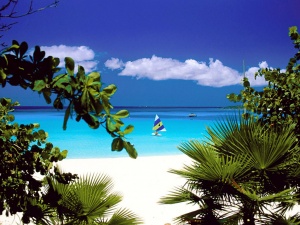This post may contain affiliate links. We may earn money or products from the highlighted keywords or companies or banners mentioned in this post.
January 16, 2015
 |
| Bangkok // photo by 仁仔 何 via Flickr |
by Tom Vater, The Daily Telegraph, January 16, 2015
Thailand attempts to fix its sagging international image while admitting it is facing increasing competition from Cambodia, Laos and Burma
Shortly after the military coup in May 2014, General Prayuth Chan-ocha, coup leader and now Prime Minister of Thailand, published twelve values that he believes represent Thainess, which are recited by pupils in schools across the country each morning. The Tourism Authority of Thailand (TAT) has picked up on the theme and its new 2015 Discover Thainess campaign launched with a parade in downtown Bangkok on Wednesday. As the centerpiece of this effort to revive a sagging tourist industry, TAT has announced a year-long global promotion campaign of twelve slightly off the beaten track cities and twelve new tourism routes.
Tourism has not fared well in 2014. TAT reported last week that visitor numbers were down 6.6 per cent on the previous year. Kobkarn Wattanavrangkul, minister of tourism and sports, attributes the drop in tourist arrivals to political unrest in the first half of last year, prior to the coup, and to the fall of the ruble, which has significantly reduced the number of Russian visitors.
But Thailand’s tourist industry has also been hit by safety concerns. The high profile murder of two British backpackers on the island of Ko Tao and its subsequent controversial police investigation coupled with insensitive comments about female tourists in bikinis by the Prime Minister was widely reported by the international press.
More recently, frequent incidences of police harassing foreigners in central Bangkok have created more critical headlines. Prime Minister Prayuth touched on the issue in his opening speech for 2015 Discover Thainess: “We want everyone to join hands and to help improve the country’s security.”
It’s not all bad news though. The World Tourism Organization (UNWTO) reported that Thailand was one of the top 10 global tourism destinations in 2012 and 2013. Mass tourism has been an economic mainstay in Thailand for three decades, and the country’s charm remains largely intact.
But there are new challenges facing Thailand’s tourist industry, not least from neighbouring countries. Cambodia, Laos and especially Burma are becoming ever more popular holiday alternatives.
Kobkarn acknowledges the increasing competition. “We are promoting new destinations because we have to diversify, especially due to the opening of new markets in ASEAN. The 12 cities and tourist routes project is an attempt to come up with fresh and exciting alternatives to the usual tourist hot spots like Ko Samui, Phuket and Chiang Mai.”
One such destination is Lampang, a small town south of Chiang Mai. Here, tourists can admire Lanna architecture, sample unique dishes, ride around in horse carriages and take part in meditation retreats.
Kobkarn also believes there are other, more long term strategies in place to revive the country’s image, starting with education. “Thailand’s biggest asset is its people and we need to teach young Thais to be proud and knowledgeable about their homeland, so they won’t forget their heritage and will be able to pass their culture on to visitors.”
Thainess indeed.
Read Tom Vater’s expert guide to Bangkok
This article was written by Tom Vater from The Daily Telegraph and was legally licensed through the NewsCred publisher network.
![]()
What do you think of this $type?











